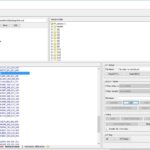The initial concept was straightforward: “Why don’t we create a diagnostic scanning tool capable of monitoring various parts of a car?”
From this simple idea, the OBD scanner was born.
Over the years, these scanners have continuously evolved to meet changing regulatory requirements and to remotely and internally test different vehicle components.
Let’s delve into the differences between OBD1 and OBD2 systems and understand why each system has its specific place in automotive diagnostics.
The Evolution of OBD Scanners
Every car owner wants assurance that their vehicle is running smoothly.
Numerous critical components require monitoring, each with a specific performance objective.
Government and industry guidelines have significantly streamlined vehicle monitoring systems.
The two primary frameworks developed for monitoring vehicle performance are known as OBD1 and OBD2 scanners.
The fundamental difference lies in their nature: OBD1 was a pioneering framework, not legally mandated across the automotive industry, while OBD2 represents a more advanced and standardized system, often employing more sophisticated inspections. OBD2 was designed to address the shortcomings of OBD1, providing more detailed and comprehensive diagnostic capabilities.
OBD1 in Detail
OBD1 represents the original on-board diagnostic system.
OBD1’s contribution to automotive technology lies in its early attempts to monitor emissions and the performance of emission-related components.
Historically, OBD1 was primarily focused on controlling vehicle emissions output, and its capabilities were largely limited to this area.
OBD1 marked the industry’s first effort to optimize vehicle management capabilities, aiming to track ongoing performance against optimized baseline readings.
It allowed mechanics, both professionals and DIY enthusiasts, to inspect vehicle subsystems. However, the measured values for emissions and other variables monitored by OBD1 could fluctuate over time, reducing the long-term effectiveness of these early scanners in various situations. Despite these limitations, OBD1 served as the initial industry standard, setting the stage for nationwide vehicle monitoring.
The United States’ leadership in the automotive industry significantly influenced global standards. OBD1 was developed to meet these initial standards, but as countries like China saw a rise in individual car ownership and established their own regulations, OBD1’s capabilities were not always sufficient. This led to the development and adoption of OBD2.
OBD2 in Detail
When the limitations of the primary U.S. monitoring framework, OBD1, became apparent, the automotive industry recognized the need to upgrade diagnostic scanners.
Development began on OBD2, aiming to address the fundamental monitoring needs that OBD1 and the interim OBD1.5 systems couldn’t fully meet.
Globally, cars were becoming more efficient, manufactured with advanced components, and sold to a diverse customer base with varying priorities and standards. Advancements in diagnostic monitoring were crucial to test a wider range of parameters and meet modern requirements.
OBD2 excels at verifying data from a broader range of vehicle systems and provides more precise information about individual car parts.
Introduced as the second-generation on-board diagnostic system, OBD2 became standard in 1996, five years after the widespread adoption of OBD1. OBD2 simplified diagnostics in ways that OBD1 could not. These systems connect to devices, making it easier for mechanics and car owners to interpret diagnostic readings.
OBD2 fault codes are structured with a letter followed by four numbers. For instance, the letter ‘B’ indicates a body issue, while ‘P’ still denotes powertrain problems.
The second digit in the code specifies the type of fault. This structured coding system provides mechanics with specific information to understand the necessary repairs.
OBD2 provides enhanced monitoring of sensor and actuator circuits, significantly surpassing OBD1’s capabilities. It can display a wider range of issues compared to OBD1.
Key Differences Between OBD1 and OBD2
To this day, the question “What is the difference between OBD1 and OBD2?” remains a common one among car owners and enthusiasts. Here are some of the most significant distinctions between these two systems:
-
Depth of Diagnostics: OBD2 offers a far more in-depth diagnostic capability compared to OBD1. OBD2 systems record a broader range of parameters and potential issues that OBD1 was not designed to detect.
-
Standardization and Global Applicability: OBD1 lacked standardization and was not universally applicable across different vehicle types and global regions. For example, OBD1 systems varied significantly even within the United States, with California’s standards not easily replicable elsewhere. Many manufacturers developed proprietary emission controls under OBD1. OBD2, in contrast, provides a standardized approach, making it more universally applicable and easier to use on a larger scale.
-
Fault Code Interpretation: OBD1 fault codes were often displayed using Check Engine Light (CEL) or Service Engine Soon (SES) lights, often requiring specialized tools and manufacturer-specific code books for interpretation. OBD2 utilizes a standardized alphanumeric code system, starting with a letter followed by four numbers, providing a more universally understandable fault code structure.
Conclusion
All industries progress over time, and the automotive industry exemplifies this evolution, particularly in diagnostic technology. The development of the OBD2 scanner to address the shortcomings of OBD1 clearly demonstrates this advancement.
Since 1996, OBD2 has become the standard, providing enhanced diagnostic capabilities. However, as electric vehicles become more prevalent and gasoline-powered vehicles continue to improve efficiency, further changes to OBD systems, potentially beyond OBD2, may be required.
For now, OBD2 is expected to remain the industry standard, adapting and evolving alongside the automotive industry.
